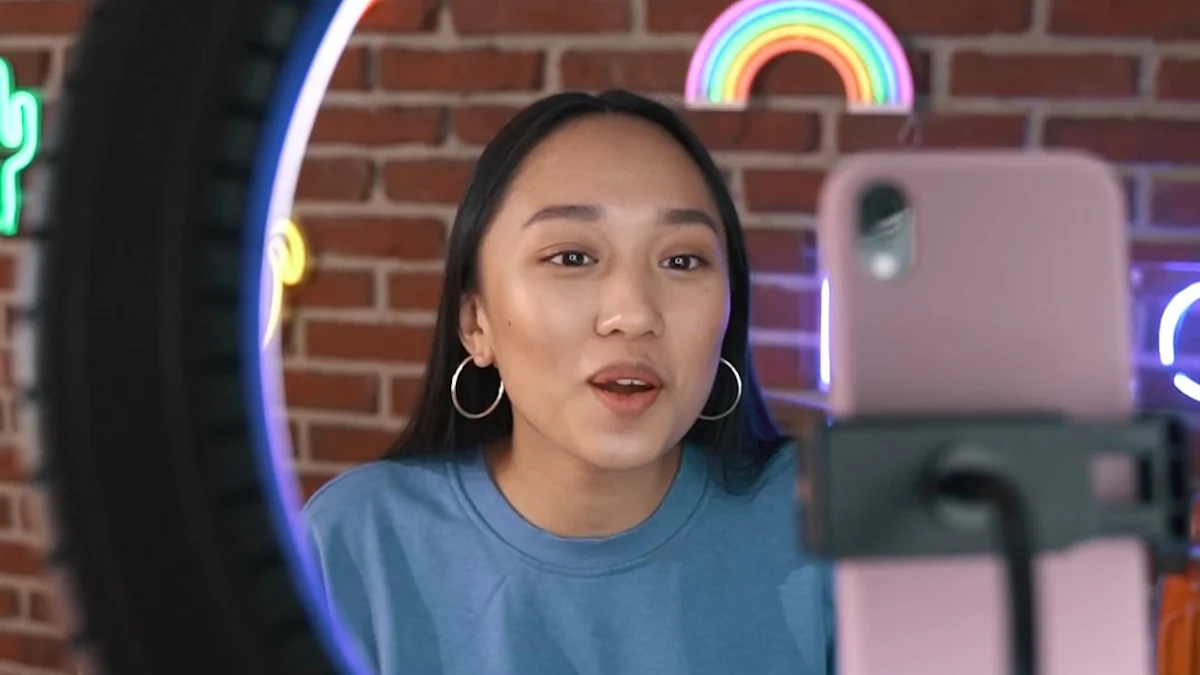5 Tips for Managing Influencer Campaigns Successfully

Managing influencer campaigns can feel overwhelming, especially when you're juggling multiple tasks. You might struggle to find the right influencer or wonder if their content truly impacts your brand's growth. Tracking results and proving ROI often feels like solving a puzzle. Sound familiar? You're not alone. Many businesses face these challenges, but the good news is that you can overcome them. With the right approach and a few practical tips, influencer campaign management becomes much easier. Ready to take control and see real results? Let’s dive in.
Set Goals for Effective Influencer Marketing Campaigns
Setting clear goals is the foundation of any successful influencer marketing campaign. Without them, you’re essentially flying blind. Goals give you direction, help you measure success, and ensure your efforts align with your overall marketing strategy.
Why Goals and KPIs Matter
Why do goals matter so much? They keep your influencer marketing efforts focused. Whether you want to boost sales, increase brand awareness, or drive website traffic, having a clear objective ensures you and your influencers are on the same page.
Key Performance Indicators (KPIs) are equally important. They help you track progress and measure the success of your campaign. For example, if your goal is to enhance customer engagement, you might monitor likes, comments, and shares. KPIs turn vague aspirations into measurable outcomes, making it easier to see what’s working and what’s not.
Here’s a quick look at some common KPIs for influencer marketing campaigns:
| KPI | Description |
|---|---|
| Brand Awareness | Measures reach, impressions, and visibility, indicating audience size and awareness of the brand. |
| Engagement | Assesses likes, comments, shares, and mentions, reflecting how well the content resonates with the audience. |
| Conversions | Tracks sales driven by the campaign, essential for measuring profitability and success. |
| Audience Growth | Indicates new followers or leads gained, contributing to long-term brand success. |
| Return on Investment | Determines campaign profitability, essential for evaluating overall success. |
Common KPIs for Influencer Campaign Management
When managing influencer campaigns, you’ll want to focus on KPIs that align with your goals. Here are some examples of measurable goals for influencer marketing campaigns:
- Earn more user-generated content (UGC)
- Build brand awareness
- Drive reviews and social proof
- Generate more leads
- Increase customer retention and community engagement
- Drive website traffic
- Boost sales
Each of these goals can be tied to specific KPIs. For instance, if you aim to boost sales, track conversions and ROI. If your focus is on brand awareness, monitor reach and impressions. Choosing the right KPIs ensures you’re measuring what truly matters.
Aligning Campaign Goals with Marketing Strategy
Your influencer marketing goals shouldn’t exist in a vacuum. They need to align with your broader marketing strategy. For example, if your overall strategy focuses on building a loyal community, your influencer campaign should prioritize engagement and audience growth. On the other hand, if your strategy is sales-driven, your campaign should focus on conversions and ROI.
Think of your goals as a bridge between your marketing strategy and your influencer collaboration. When everything aligns, your campaigns become more cohesive and impactful. This alignment also makes it easier to communicate your expectations to influencers, ensuring they create content that supports your brand’s vision.
Find the Right Influencers for Your Brand

Finding the right influencers is crucial for running an effective influencer marketing campaign. The right match ensures your message reaches the right audience and resonates with them. But how do you identify the perfect fit? Let’s break it down.
Researching and Vetting Influencers
Not all influencers are created equal. To find the best ones for your brand, start by researching their personality and values. Do they align with your brand’s style? Review their past content to see if it matches the quality and relevance you’re looking for. Dive into their audience demographics. Are they speaking to the same people you want to reach?
Take it a step further by examining their engagement metrics. A large following might look impressive, but it’s the quality of interactions—likes, comments, and shares—that truly matters. Prioritize influencers who create meaningful connections with their audience. Use relevant hashtags to expand your search and uncover hidden gems.
Ensuring Authenticity and Brand Alignment
Authenticity is everything in influencer marketing. Audiences can spot inauthenticity from a mile away, and it can hurt your campaign. Look for influencers who genuinely believe in your brand and share your values. Their passion and trustworthiness will shine through in their content, making it more relatable and impactful.
An ideal influencer should also bring creativity, professionalism, and consistency to the table. They need to craft engaging content while maintaining a professional approach to your collaboration. Honesty and transparency are equally important. When influencers are upfront with their audience, it builds trust—not just for them but for your brand too.
Tools for Discovering Influencers
The right tools can make influencer discovery a breeze. Platforms like MightyScout offer advanced search capabilities, analytics, and tracking features, giving you a comprehensive solution for influencer campaign management. Heepsy is another great option, with detailed filters for targeting based on location, demographics, and engagement rates. If you’re looking to monitor media coverage and market trends, Meltwater provides real-time alerts and sentiment analysis.
These tools save time and help you find influencers who align with your goals. Whether you’re focusing on reach, engagement, or conversions, they simplify the process and ensure you’re making data-driven decisions.
Build Strong Influencer Relationships
Building strong relationships with influencers is key to influencer marketing success. When you invest in genuine connections, you create a foundation for trust, credibility, and long-term partnerships. Let’s explore how you can foster these relationships effectively.
Communicating Clearly and Respectfully
Clear communication is the backbone of any successful collaboration. You need to set expectations early and ensure both you and the influencer are on the same page. Start by creating a feedback loop. Regular check-ins and open dialogue help you address concerns and improve the campaign as it progresses. For example, brands like Deloitte have used internal influencers to boost engagement by hosting open discussions, which led to better results.
Collaboration on creative content is another effective strategy. Work with influencers to craft authentic content that resonates with their audience. Share your goals, but also listen to their ideas. This two-way communication builds mutual respect and ensures the campaign feels natural, not forced.
Balancing Creative Freedom with Brand Guidelines
Influencers thrive on creativity, but you also need to maintain your brand’s identity. Striking the right balance is essential. Start by sharing clear brand guidelines. Explain your values, tone, and visual style so the influencer understands your expectations. At the same time, give them room to adapt your message to their audience. This flexibility allows them to create content that feels genuine while staying true to your brand.
If you’re unsure how to balance this, think of it as a partnership. Collaborate to align their creativity with your marketing goals. Experiment within the boundaries of your guidelines and refine your approach based on performance metrics. This balance ensures your influencer collaborations remain impactful and consistent.
Offering Fair Compensation and Incentives
Fair compensation shows influencers you value their work. It’s not just about money—it’s about recognizing their effort and expertise. Offer payment that reflects the scope of the campaign and the influencer’s reach. You can also provide additional incentives like free products, exclusive access to events, or performance-based bonuses.
When you treat influencers fairly, you build trust and loyalty. This can lead to long-term partnerships, which benefit both parties. Long-term relationships also give you access to valuable demographic data, helping you make smarter marketing decisions. Plus, influencers who feel appreciated are more likely to create content that goes above and beyond.
Tip: Strong relationships make endorsements feel authentic. This authenticity builds trust with the influencer’s audience, leading to higher engagement and conversions.
By focusing on communication, creative freedom, and fair compensation, you can build relationships that drive influencer marketing success.
Monitor and Optimize Influencer Campaign Performance

Monitoring and optimizing your influencer marketing campaigns is essential for achieving success. By tracking key metrics, using analytics tools, and adjusting strategies based on data, you can ensure your campaigns deliver the best results.
Tracking Key Metrics
To understand how well your influencer marketing campaign is performing, you need to track the right metrics. These metrics give you a clear picture of what’s working and what needs improvement. Here are some common ones to monitor:
- Website traffic from social media
- Conversions and revenue
- Search interest and earned media mentions
You can also break these down into categories for better clarity:
| Metric Category | Examples |
|---|---|
| Visibility indicators | Reach, Impressions |
| Engagement indicators | Reactions, Comments, Shares, Brand Mentions, Engagement Rate |
| Community growth indicators | New Subscribers |
| Web traffic indicators | Clicks, New Users, Page Views, Session Duration, Bounce Rate |
| Sales indicators | Conversions, Influencer Marketing ROI |
| Awareness indicators | Share of Brand’s Voice, Key Message Penetration |
Tracking these metrics helps you measure the impact of your influencer collaboration and ensures your brand stays on track.
Using Analytics Tools for Insights
Analytics tools make it easier to gain insights into your campaign’s performance. They help you identify trends, measure ROI, and optimize your influencer marketing efforts. Here are some best practices for using these tools:
- Set clear goals and KPIs to define what success looks like.
- Monitor campaign performance in real-time to make timely adjustments.
- Use A/B testing to see which content resonates best with your audience.
- Personalize campaigns using customer data for targeted messaging.
- Leverage AI tools like Einstein AI to predict customer behavior and optimize proactively.
- Analyze performance across multiple channels to ensure consistent messaging.
By following these steps, you can make data-driven decisions and improve your influencer marketing campaigns.
Adjusting Strategies Based on Data
Data is your best friend when it comes to refining your influencer marketing strategy. It helps you understand your market, monitor competitors, and select influencers who align with your goals. Here’s how you can use data effectively:
- Focus on performance metrics like reach, impressions, and engagement rate.
- Evaluate spend efficiency with metrics like cost per post and cost per engagement.
- Measure cost equivalency using earned media value (EMV).
For example, if you notice low engagement on certain content, you can adjust your messaging or collaborate with a different influencer. Data ensures your campaigns stay flexible and aligned with your brand’s objectives.
Tip: Regularly reviewing your campaign data helps you stay ahead of trends and maximize your ROI.
By tracking metrics, leveraging analytics tools, and using data to refine your strategies, you can master influencer campaign management and achieve long-term success.
Evaluate Your Influencer Marketing Campaign
Evaluating your influencer marketing campaign is the final step to ensure you’ve achieved your goals and gained valuable insights for future efforts. Let’s break it down into three key areas.
Measuring ROI and Campaign Success
Measuring ROI is essential to understand the impact of your influencer marketing efforts. You can use several methods to track success:
- Monitor immediate sales using unique links or promo codes.
- Assess brand awareness by measuring familiarity and recall.
- Compare your campaign’s performance to previous ones.
- Calculate Earned Media Value (EMV) to estimate the value of influencer reach and engagement.
UTM tracking is another powerful tool. It lets you see how much traffic and revenue each influencer generates. Promotional codes also help you track individual sales performance. Don’t forget to consider the additional value of authentic content created by influencers. These methods give you a clear picture of your campaign’s effectiveness.
Tip: ROI isn’t just about numbers. Think about the long-term benefits, like increased brand loyalty and audience trust.
Gathering Feedback from Influencers and Teams
Feedback is a goldmine for improving future campaigns. Start by asking influencers about their experience. Did they feel supported during the collaboration? Were the goals and expectations clear? Their insights can help you refine your approach.
Your internal team’s feedback is just as important. Discuss what worked and what didn’t. Did the campaign align with your marketing strategy? Were there any roadblocks? Honest conversations with your team can uncover hidden challenges and opportunities.
Note: Open communication fosters stronger relationships with influencers and ensures smoother campaigns in the future.
Documenting Lessons for Future Campaigns
Every campaign teaches you something new. Document these lessons to build a playbook for future success. Here are some common takeaways:
- Authenticity matters. Let influencers maintain editorial control to keep their content credible.
- Micro-influencers often outperform larger ones for targeted marketing.
- Paid endorsements should feel natural and be clearly labeled.
- Consistent hashtags and calls to action boost engagement.
- Creativity is key. Encourage influencers to craft unique, engaging content.
Amplify your campaigns by integrating them with other media channels. This approach increases your reach and reinforces your message. By learning from past campaigns, you’ll create even more impactful influencer marketing strategies.
Tip: Treat every campaign as a stepping stone. The more you learn, the better your results will be.
Mastering influencer campaign management doesn’t have to feel overwhelming. By setting clear goals, finding influencers who align with your brand, and building strong relationships, you can create campaigns that truly resonate. Monitoring performance and evaluating results ensures you stay on track and learn from every effort.
Here’s what successful campaigns teach us:
- Creativity helps your content stand out.
- Authenticity builds trust and drives engagement.
- Strategic partnerships amplify your message through genuine promotion.
To improve your efforts, follow these steps:
- Define your objectives and know your audience.
- Research influencers and evaluate their fit.
- Set a realistic budget and craft compelling pitches.
Apply these tips, and you’ll see your influencer marketing campaigns deliver real results.
FAQ
What is the best way to measure the success of an influencer campaign?
Track metrics like engagement, conversions, and ROI. Use tools to analyze data and compare results to your goals. This helps you see what worked and what didn’t.
How do I choose the right influencer for my brand?
Focus on authenticity and alignment with your brand values. Check their audience demographics, engagement rates, and past collaborations. Choosing the right influencer ensures your message resonates with the right people.
Can influencer marketing improve brand visibility and awareness?
Absolutely! Influencers can introduce your brand to new audiences. Their authentic content builds trust and boosts your visibility, making it a key part of your social media strategy.
How do I balance creative freedom with brand guidelines?
Share clear guidelines but allow influencers to adapt your message to their style. This keeps the content authentic while staying true to your brand’s identity.
What tools can help manage influencer campaigns?
Platforms like MightyScout and Heepsy simplify influencer discovery and tracking. Analytics tools like Google Analytics or Meltwater help you measure performance and refine your social media strategy.
See Also
7 Key Actions for Crafting an Effective Influencer Strategy
Crucial Advice for Planning Influencer Brand Experiences
7 Essential Steps to Create Your Influencer Marketplace
Comprehensive Guide to Choosing the Right Influencer Platform
